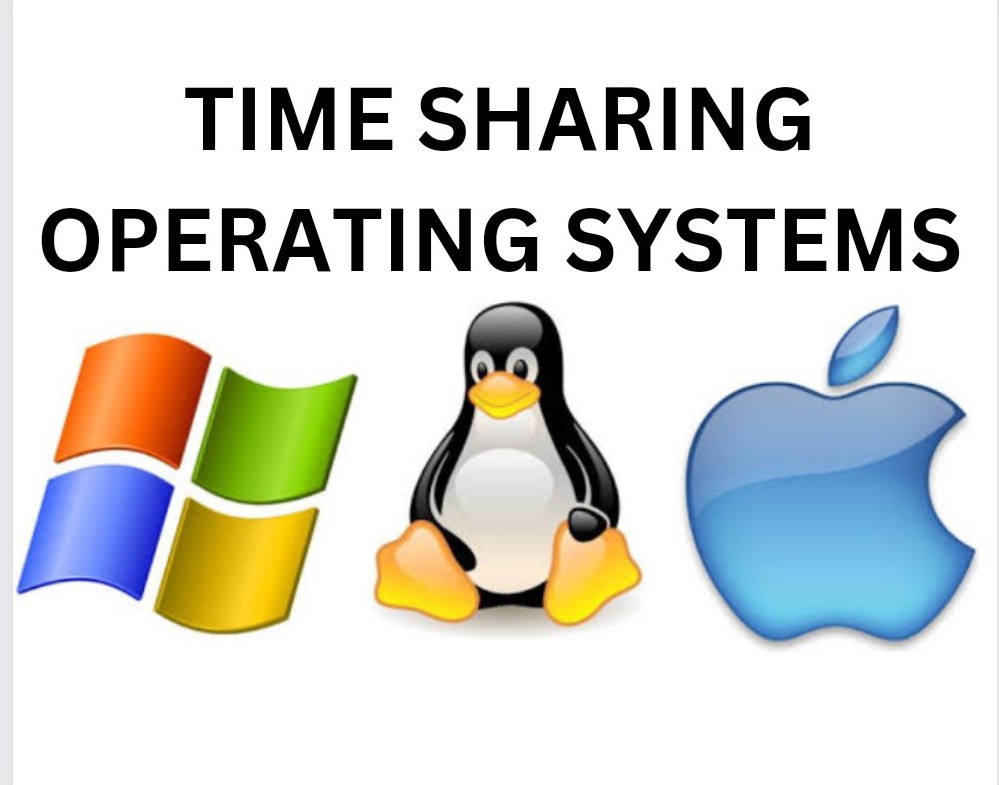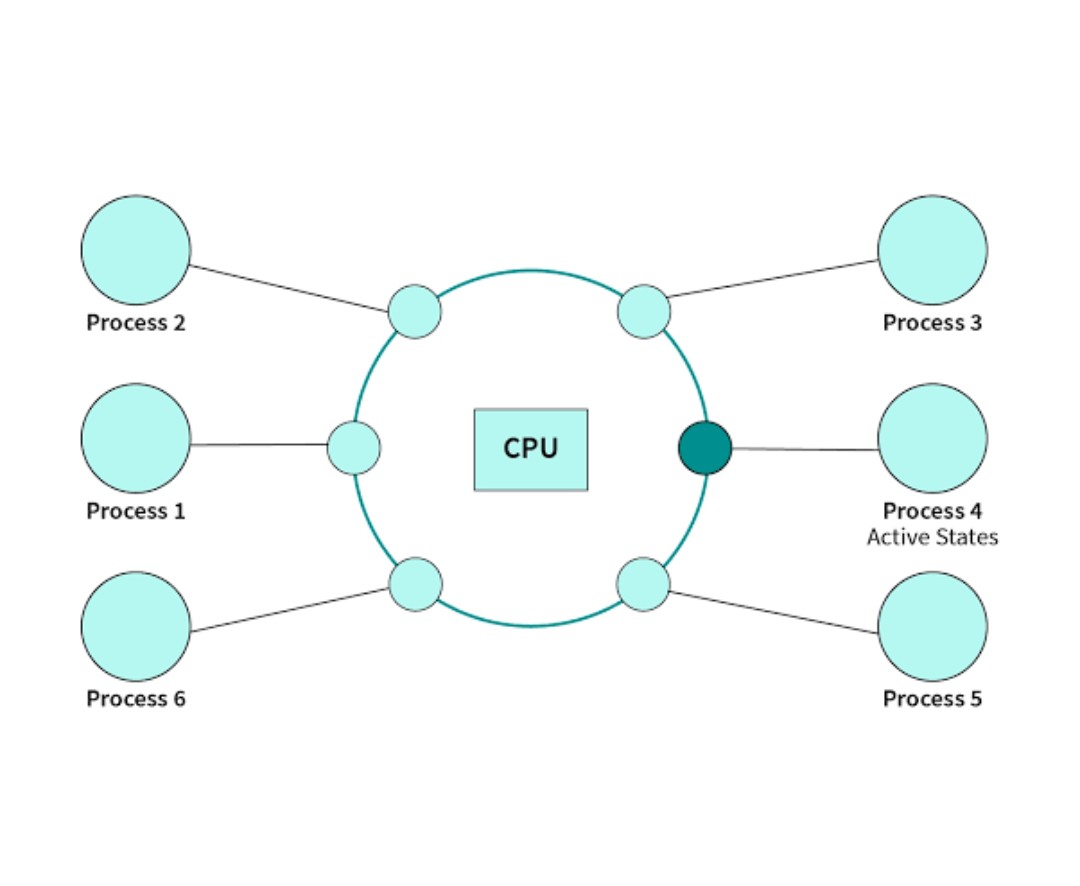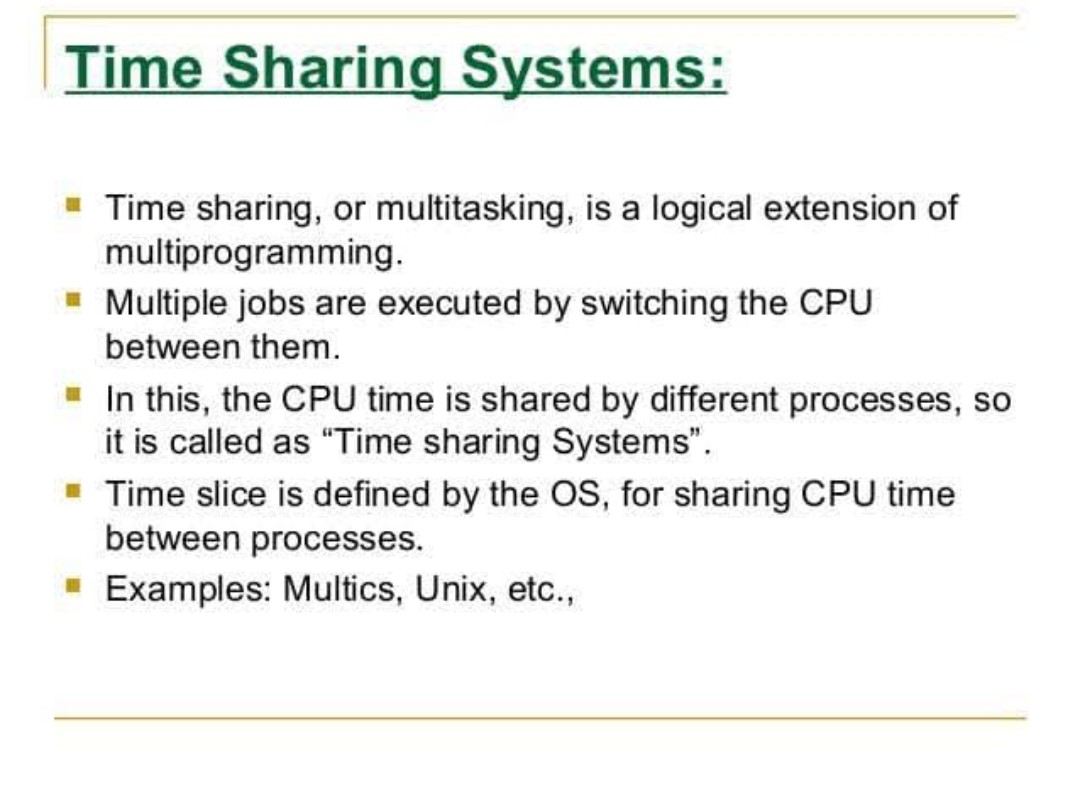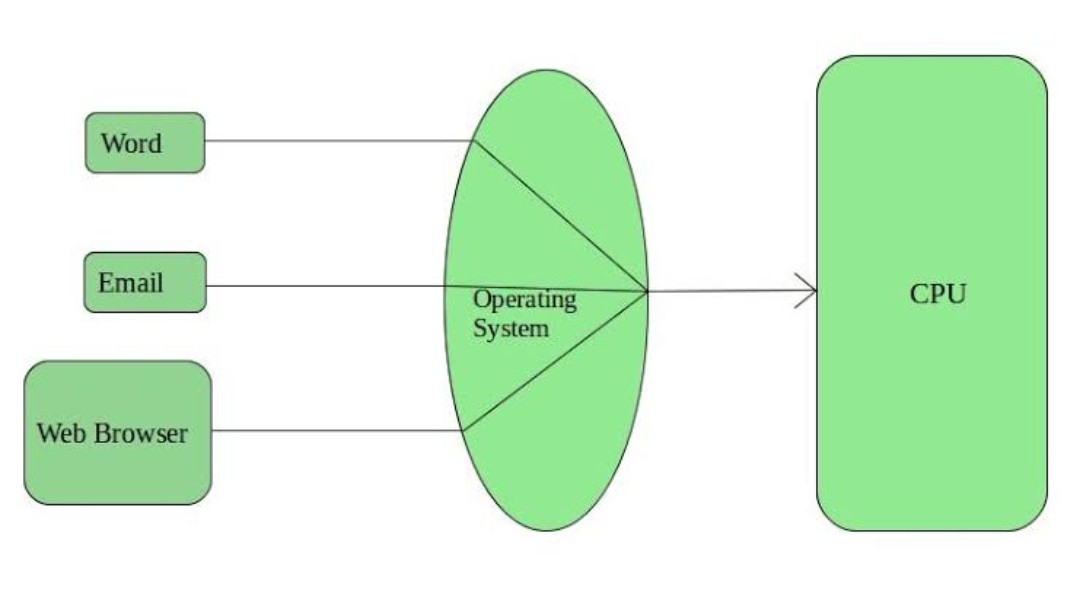In the realm of operating systems (OS), efficiency is the key, and Time Sharing Operating Systems (TSOS) embodies this essence to its fullest. Time sharing operating system, a pioneering concept in computing, revolutionized how multiple users interacted with a single computer system.
This innovative approach to time-sharing has paved the way for the modern computing landscape we know today. In this article, we delve into the intricacies of Time Sharing Operating Systems, exploring its evolution, benefits, applications, and why it remains a crucial element in the world of computing.
What is Time Sharing Operating System?

Time Sharing Operating System (TSOS) is a computing paradigm that allows multiple users to interact with a single computer system simultaneously. In traditional computing environments, a single user gets exclusive access to the entire system, but in a time-sharing system, the CPU time is divided into small intervals, known as time slices.
Each user is allocated a time slice during which they can execute their programs and perform operations. The system swiftly switches between users, giving the illusion of concurrent access and enabling multiple users to utilize the system’s resources efficiently.
Time Sharing Operating Systems are designed to optimize resource utilization by allowing multiple users to interact with a computer simultaneously. Rather than dedicating the entire computing power to one user at a time, Time Sharing Operating System divides the CPU time into small intervals, enabling users to share resources efficiently. Each user feels as though they have exclusive access to the system, even though the resources are being shared among many.
The key principles of a time-sharing operating system involve fair resource allocation, real-time responsiveness, and efficient utilization of the CPU and other hardware components. Time sharing optimizes resource utilization by ensuring that the CPU is constantly busy processing tasks, thus enhancing the overall system efficiency.
One of the essential features of time-sharing systems is that they provide the feeling of individual access to each user while efficiently sharing resources. This approach revolutionized the way users interact with computers and is fundamental to modern computing environments, especially in scenarios where multiple users need to access a common system, such as in web servers, cloud computing, and educational institutions.
Evolution of Time Sharing Operating Systems
The concept of time-sharing emerged in the late 1950s and early 1960s, evolving from the need to enhance the efficiency of early computers. In the beginning, computers were monolithic and cumbersome, restricting access to only one user at a time. As technology advanced, Time Sharing Operating Systems like Compatible Time-Sharing System (CTSS) and MULTICS emerged, introducing the world to interactive computing. Today, TSOS has evolved further, integrating seamlessly with cloud computing, allowing for unparalleled flexibility and efficiency.
The evolution of Time Sharing Operating Systems (TSOS) has been a remarkable journey marked by significant milestones and technological advancements. Here’s a chronological overview of the evolution:
1. 1950s – Early Concepts:
The idea of time sharing began to surface in the late 1950s. Researchers like John Backus envisioned a system where multiple users could access a computer simultaneously.
2. Early 1960s – Compatible Time-Sharing System (CTSS):
Developed at the Massachusetts Institute of Technology (MIT) in the early 1960s, CTSS was one of the pioneering time-sharing operating systems. It allowed multiple users to log in and execute programs concurrently.
3. Late 1960s – Multics (Multiplexed Information and Computing Service):
Multics, a collaborative project between MIT, Bell Labs, and General Electric, was an ambitious effort to develop a sophisticated time-sharing system. Although Multics faced challenges and delays, it laid the groundwork for future advancements in time-sharing.
4. Early 1970s – UNIX:
UNIX, developed at Bell Labs by Ken Thompson and Dennis Ritchie, played a pivotal role in the evolution of time-sharing systems. It introduced a simpler, more efficient approach to time sharing and became a foundation for subsequent developments.
5. 1970s – Growth and Commercialization:
The 1970s witnessed a proliferation of time-sharing systems, both in research and commercial domains. Various operating systems like TSO (Time Sharing Option) for IBM mainframes and RSTS (Resource Time Sharing System) for PDP-11 were developed during this period.
6. 1980s – Microcomputers and Time Sharing:
The advent of microcomputers in the 1980s led to the development of time-sharing systems for these smaller platforms. Operating systems like TOPS-10 and TOPS-20 provided time-sharing capabilities for Digital Equipment Corporation (DEC) minicomputers.
7. 1990s – Client-Server Architectures and the Internet:
The growth of client-server architectures and the rise of the internet in the 1990s influenced the evolution of time-sharing. Remote access to servers became commonplace, and operating systems like Windows NT and Novell NetWare played vital roles in enabling multi-user environments.
8. 2000s and Beyond – Cloud Computing and Modern Time Sharing:
The 2000s marked a significant shift towards cloud computing. With the advent of cloud platforms such as Amazon Web Services (AWS), Google Cloud, and Microsoft Azure, time sharing reached new heights. Cloud providers offered shared resources and efficient time-sharing mechanisms, making it a fundamental aspect of modern computing.
Today, time sharing continues to evolve rapidly in the context of cloud computing, virtualization, containerization, and serverless architectures. It remains a critical element in providing efficient resource utilization and enabling multi-user access to computing systems across various domains.
How Time Sharing Operating Systems Work

Time Sharing Operating Systems (TSOS) operate on the principle of time slicing, allowing multiple users to share a single computing system efficiently. Here’s an in-depth look at how TSOS works:
1. Time Slicing:
The core principle of TSOS is time slicing, where the CPU time is divided into small, fixed intervals known as time slices or time quanta.
Each user is allocated a time slice during which they can execute their programs and perform operations on the system.
2. User Interaction:
When a user logs into the system, they are given access to the CPU for their allocated time slice.
During this time slice, the user can run programs, process tasks, and interact with the system as if they had exclusive access to the entire system.
3. Context Switching:
Once a user’s time slice is over, the system performs a context switch, swiftly switching to the next user in line.
The system saves the current state of the user’s program, including the values of registers and program counter, to resume execution later.
4. Fair Resource Allocation:
TSOS ensures fair resource allocation by providing each user an equal and fixed time slice.
Users receive timely and fair access to the CPU and other system resources, preventing one user from monopolizing the system.
5. Continuous Cycle:
The system continuously cycles through all users, giving each user their allocated time slice and maintaining the illusion of concurrent access.
Users experience real-time responsiveness, even though they are sharing resources with others.
6. Optimized Efficiency:
By efficiently utilizing the CPU and other resources, TSOS maximizes the system’s efficiency.
The CPU is kept busy, ensuring that the computing resources are used optimally and effectively.
7. Priority-based Allocation (Optional):
In some TSOS implementations, users with higher priority or specific resource needs may be allocated longer time slices to ensure critical operations are completed efficiently.
8. Effective Resource Sharing:
TSOS allows multiple users to effectively share the system’s resources, such as CPU time, memory, and I/O devices, based on the time-sharing intervals.
By employing these principles, Time Sharing Operating Systems enable efficient sharing of computing resources among multiple users, promoting a productive and responsive computing environment. The continuous and rapid cycling through users’ time slices ensures fair access and optimal utilization of the system’s capabilities.
Advantages of Time Sharing Operating Systems

Time Sharing Operating Systems (TSOS) offer a range of advantages that make them a fundamental choice in modern computing. Here are some key advantages:
1. Efficient Resource Utilization:
TSOS optimizes the utilization of computing resources by allowing multiple users to share them simultaneously.
Each user is allocated a time slice, ensuring that the CPU and other resources are constantly in use, leading to higher efficiency.
2. Cost-Effective:
Time sharing significantly reduces hardware and operational costs by enabling multiple users to share a single system.
Organizations can achieve high levels of resource utilization without the need for dedicated individual machines for each user.
3. Enhanced User Experience:
Users experience near-real-time responsiveness, making them feel as though they have exclusive access to the system.
This enhances the overall user experience, enabling users to complete tasks swiftly and efficiently.
4. Increased Productivity:
Time sharing boosts productivity as multiple users can simultaneously access and use the system’s resources, leading to enhanced efficiency and faster task completion.
5. Fair Resource Allocation:
TSOS ensures fair resource allocation by providing each user a fixed and equal time slice, preventing any single user from monopolizing the system.
Users have equitable access to the system, promoting a sense of fairness and preventing resource contention.
6. Scalability:
Time sharing facilitates scalability as new users can be easily accommodated by adjusting the length of time slices or by allocating additional resources.
The system can handle an increasing number of users without a significant drop in performance.
7. Promotes Multitasking:
TSOS encourages multitasking by allowing users to run multiple programs during their allocated time slice.
Users can efficiently switch between tasks, promoting a flexible and productive work environment.
8. Supports Interactive Computing:
Time sharing is well-suited for interactive computing environments, where users require prompt responses and interact with the system in real-time.
It provides a seamless interactive experience to users, enhancing usability and user satisfaction.
9. Effective for CPU-Bound and I/O-Bound Tasks:
TSOS efficiently manages both CPU-bound and I/O-bound tasks, ensuring that the system remains responsive for both types of operations.
9. Economical for Small to Medium Workloads:
TSOS is economical for workloads that do not require continuous access to dedicated resources, making it an ideal choice for small to medium-sized applications and organizations.
10. Economical for Small to Medium Workloads:
TSOS is economical for workloads that do not require continuous access to dedicated resources, making it an ideal choice for small to medium-sized applications and organizations.
Time Sharing Operating Systems have proven to be instrumental in modern computing, providing an effective way to share resources, improve productivity, and maximize the utilization of computing infrastructure while minimizing costs.
Applications of Time Sharing Operating Systems

Time Sharing Operating Systems (TSOS) find extensive applications in various domains due to their ability to efficiently serve multiple users. Here are some significant applications:
1. Interactive Computing:
TSOS is extensively used in interactive computing environments where multiple users need simultaneous access to the system, such as in offices, academic institutions, and research facilities.
2. Server Systems:
Time sharing is vital for server systems, allowing multiple clients to connect and access server resources simultaneously. It is especially useful for web servers, email servers, and file servers.
3. Cloud Computing:
Cloud service providers utilize TSOS to allocate computing resources dynamically to multiple clients over the cloud, making efficient use of the underlying infrastructure and enabling cost-effective and scalable cloud services.
4. Online Transaction Processing (OLTP) Systems:
In OLTP systems, TSOS is employed to handle concurrent transactions from multiple users accessing databases and processing transactions simultaneously.
5. Academic Institutions:
TSOS is used in computer labs and educational institutions where students and faculty need simultaneous access to computing resources for assignments, programming, and research.
6. Multimedia Applications:
TSOS is utilized in multimedia applications where users require real-time processing and access to multimedia resources like audio, video, and graphics simultaneously.
7. Scientific and Engineering Applications:
In domains such as scientific research and engineering, TSOS is utilized for conducting simulations, data analysis, and other computational tasks where multiple users need to access the system concurrently.
8. Traffic Control Systems:
TSOS is used in traffic control systems where multiple users need simultaneous access to process and analyze traffic data for effective traffic management.
9. Remote Data Centers:
Data centers often use TSOS to efficiently manage the allocation of computing resources to multiple clients remotely, optimizing resource utilization and enhancing performance.
10. Financial Applications:
In the finance sector, TSOS is used for stock trading platforms and other financial applications where multiple users need to perform transactions concurrently and receive real-time updates.
11. Time-Critical Applications:
Applications that require immediate responses, like emergency response systems or real-time monitoring, leverage TSOS to ensure timely processing and responses to events.
12. Distributed Systems:
In distributed systems, TSOS is used to coordinate and manage tasks across multiple machines and nodes, providing a cohesive environment for distributed processing.
Time Sharing Operating Systems have become fundamental in facilitating efficient multi-user access to computing resources across a wide range of applications, promoting collaboration, productivity, and effective resource utilization.
Challenges and Mitigations of time sharing operating system
Time Sharing Operating Systems (TSOS) present unique challenges, necessitating careful consideration and implementation of mitigating strategies. Here are some prominent challenges and ways to address them:
1. Resource Contentions:
Challenge: Multiple users competing for resources can lead to contentions, causing delays and degraded performance.
Mitigation: Implement effective scheduling algorithms like round-robin or priority-based scheduling to ensure fair resource allocation and minimize contentions.
2. Response Time Variability:
Challenge: Inconsistent response times can be frustrating for users, impacting their experience and productivity.
Mitigation: Use shorter time slices and employ efficient scheduling policies to reduce response time variations, providing a more predictable user experience.
3. Security Risks:
Challenge: Sharing a system among multiple users raises security concerns like unauthorized access to others’ data and potential misuse.
Mitigation: Implement robust access controls, authentication mechanisms, and encryption protocols to secure user data and ensure that only authorized users access the system.
4. Overhead from Context Switching:
Challenge: Frequent context switches between users’ processes can introduce overhead, reducing overall system efficiency.
Mitigation: Optimize context switching algorithms and minimize unnecessary switches to reduce the associated overhead while maintaining fair time slicing.
5. Balancing Resource Allocation:
Challenge: Allocating resources appropriately to all users to ensure fairness and prevent one user from monopolizing resources can be challenging.
Mitigation: Employ feedback-based algorithms that adjust time slice lengths dynamically based on a user’s resource usage patterns, promoting equitable resource allocation.
6. Scalability Issues:
Challenge: As the number of users increases, scaling the system to handle the growing demand for resources becomes challenging.
Mitigation: Optimize the TSOS architecture for scalability, leveraging distributed computing and load balancing techniques to efficiently accommodate a larger user base.
7. Increased Administrative Overhead:
Challenge: Managing and administering a TSOS, particularly as the number of users and tasks grows, can become administratively complex.
Mitigation: Implement automated management tools and monitoring systems to streamline administrative tasks, ensuring efficient system oversight and maintenance.
Related Post: Understanding Network Operating Systems: A Comprehensive Guide
8. Fairness and Prioritization:
Challenge: Providing fair resource allocation while allowing for prioritization of critical tasks can be a delicate balance.
Mitigation: Combine priority-based scheduling with mechanisms that prevent starvation to ensure fairness while allowing important tasks to receive the necessary attention.
Addressing these challenges is crucial to realizing the benefits of TSOS, enabling an efficient and equitable sharing of resources among multiple users while ensuring a seamless and responsive computing experience.
Future Trends in Time Sharing Operating Systems
Time Sharing Operating Systems (TSOS) continue to evolve, adapting to the dynamic technological landscape. Future trends in TSOS are likely to shape the way these systems operate and the benefits they offer. Here are some anticipated future trends:
1. Integration with Edge Computing:
TSOS will increasingly integrate with edge computing, allowing for efficient sharing of resources and processing at the edge of the network. This will be vital for applications requiring low latency and real-time processing.
2. Enhanced Security Measures:
Future TSOS will focus on bolstering security features, incorporating advanced encryption, multi-factor authentication, and intrusion detection systems to protect user data and ensure a secure computing environment.
3. Artificial Intelligence Integration:
Integration of artificial intelligence (AI) into TSOS will enable intelligent resource allocation, dynamic time slicing based on workload analysis, and predictive scheduling, optimizing system performance and resource utilization.
4. Energy-Efficient Time Sharing:
TSOS will evolve to incorporate energy-efficient scheduling algorithms, allowing for reduced energy consumption in devices, data centers, and other computing environments, contributing to a more sustainable computing ecosystem.
5. Blockchain Integration for Authentication:
Integration of blockchain technology for user authentication and access control will enhance the security and transparency of user interactions within TSOS, providing a decentralized and tamper-proof authentication mechanism.
6. Decentralized Time Sharing:
Future TSOS might explore decentralized architectures, leveraging blockchain or similar technologies to create a decentralized time-sharing network, promoting more distributed resource allocation and reducing dependence on centralized servers.
7. Adaptive Time Slicing Algorithms:
TSOS will employ adaptive time slicing algorithms that dynamically adjust time slice lengths based on workload changes, ensuring optimal resource allocation and responsiveness under varying user demands.
8. Quantum Computing Considerations:
With the advent of quantum computing, TSOS will evolve to accommodate quantum processing needs, potentially incorporating hybrid systems that optimize classical and quantum processing for specific tasks.
9. Enhanced User Experience:
Future TSOS will focus on delivering a seamless and personalized user experience, considering user behavior, preferences, and historical usage patterns to tailor time slicing and resource allocation accordingly.
10. Privacy-Preserving Techniques:
Privacy-preserving techniques such as federated learning and secure multiparty computation will be integrated into TSOS to protect user privacy and sensitive data during processing and resource sharing.
11. Robust Disaster Recovery and Redundancy:
TSOS will enhance disaster recovery mechanisms, employing robust redundancy and fault tolerance strategies to ensure continuous operation and minimal downtime in case of failures or disasters.
As TSOS continues to evolve, these trends will shape the landscape, enhancing resource efficiency, security, and user experience, while keeping pace with emerging technologies and the evolving needs of modern computing.
The Enduring Relevance of Time Sharing Operating Systems
The enduring relevance of Time Sharing Operating Systems (TSOS) lies in their ability to efficiently serve multiple users in a shared computing environment. Despite advancements in technology and the advent of various computing paradigms, TSOS remains relevant for several reasons:
1. Efficient Resource Utilization:
TSOS optimizes the utilization of computing resources by allowing multiple users to share them simultaneously. This efficient use of resources is fundamental in the modern era of cloud computing and distributed systems.
2. Cost-Effectiveness:
By enabling multiple users to share a single system, TSOS significantly reduces hardware and operational costs. This cost-effectiveness is particularly relevant for organizations seeking to maximize resource utilization while minimizing expenses.
3. Support for Multitasking:
TSOS supports multitasking, allowing users to execute multiple tasks concurrently. In a world where multitasking has become a necessity, TSOS provides a fundamental framework for efficient task management.
4. Real-Time Responsiveness:
TSOS ensures near-real-time responsiveness, enabling users to interact with the system and receive quick responses. This is crucial for various applications, including online transactions and interactive computing.
5. Scalability and Flexibility:
TSOS offers scalability by allowing for the efficient addition of new users and the dynamic allocation of resources. This adaptability is essential in today’s rapidly evolving technological landscape.
6. Promotion of Collaboration:
By facilitating multiple users to access and use a system simultaneously, TSOS encourages collaboration and fosters a cooperative computing environment, which is increasingly vital for modern work and research.
7. Support for Cloud Computing:
Cloud computing, a dominant paradigm today, relies heavily on the principles of time sharing. Cloud service providers use TSOS to allocate resources dynamically, making it a linchpin in modern cloud architectures.
8. Realizing Green Computing Goals:
TSOS contributes to green computing objectives by enabling more efficient use of hardware, reducing the need for redundant machines, and thus minimizing the overall environmental footprint.
9. Versatility Across Domains:
TSOS finds applications across a wide range of domains, including academic institutions, businesses, healthcare, finance, transportation, and more. Its versatility ensures its continued relevance in diverse sectors.
10. Historical Significance:
The historical significance of TSOS as a pioneering concept in computing solidifies its enduring relevance. It laid the foundation for subsequent advancements and continues to influence modern operating system design.
In conclusion, Time Sharing Operating Systems have stood the test of time due to their ability to efficiently serve multiple users, optimize resource utilization, and adapt to the evolving needs of the computing landscape. As technology progresses, TSOS will likely continue to play a vital role in shaping the future of computing.
Conclusion
Time Sharing Operating Systems have come a long way since their inception, and their relevance has only grown in today’s fast-paced digital landscape. By efficiently managing resources and maximizing productivity, TSOS continues to be a fundamental element in the evolution of operating systems. As technology advances, we can expect even more sophisticated applications and enhancements, further solidifying Time Sharing Operating Systems’ place in the future of computing.
